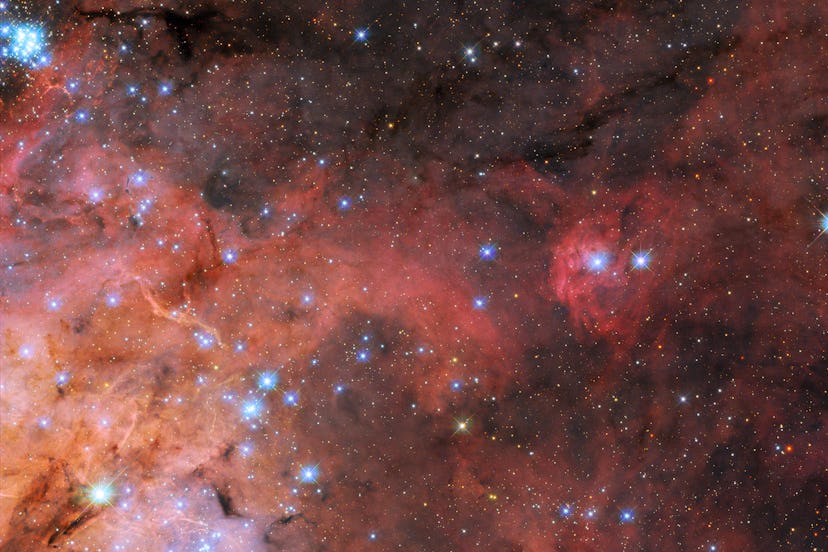This Orange And Red "Star Factory" Is A Whole New View At A Familiar Nebula
The European Space Agency has shared another look at the Tarantula Nebula, one of the key areas of space the Hubble telescope keeps an eye on.

A new image taken from the Hubble Space Telescope reveals a gorgeous, technicolor orange and red star factory that is actually a new look at a familiar nebula we’ve seen before.
The snapshot, with its fiery colors, looks like a painting or as if it’s computer-generated. But it’s a real area up in space. And it’s an important one. Called the Tarantula Nebula, this area is the birthplace of stars and is just 161,000 light-years from Earth.
Can you explain what we see in this photo like we’re 5 years old?
According to the European Space Agency (ESA), you’re looking at the Tarantula Nebula, also known as 30 Doradus, an area of space that’s been imaged by the JWST and Hubble several times. It’s a popular location for Hubble to document. That’s because it’s the brightest star-forming region in this whole galactic neighborhood, the ESA notes.
Plus, it’s “home to the hottest, most massive stars known,” so it’s a particularly interesting area for scientists because there’s a lot here that they can learn about our galaxy.
“This makes it a perfect natural laboratory in which to test out theories of star formation and evolution,” ESA shares, “and Hubble has a rich variety of images of this region.” Any new images or details from this area are exciting for researchers who want to learn as much as possible.
This image was made by combining data from two different “observing proposals” — which are really just two different purposes for looking at that area. The first observing proposal was to look at the properties that are in all the dust grains between the stars (the darker clouds in the picture). The second observing proposal studied the conditions of star formation, the very basics of an early universe.
Visit the ESA website to learn more about the Tarantula Nebula.
This article was originally published on